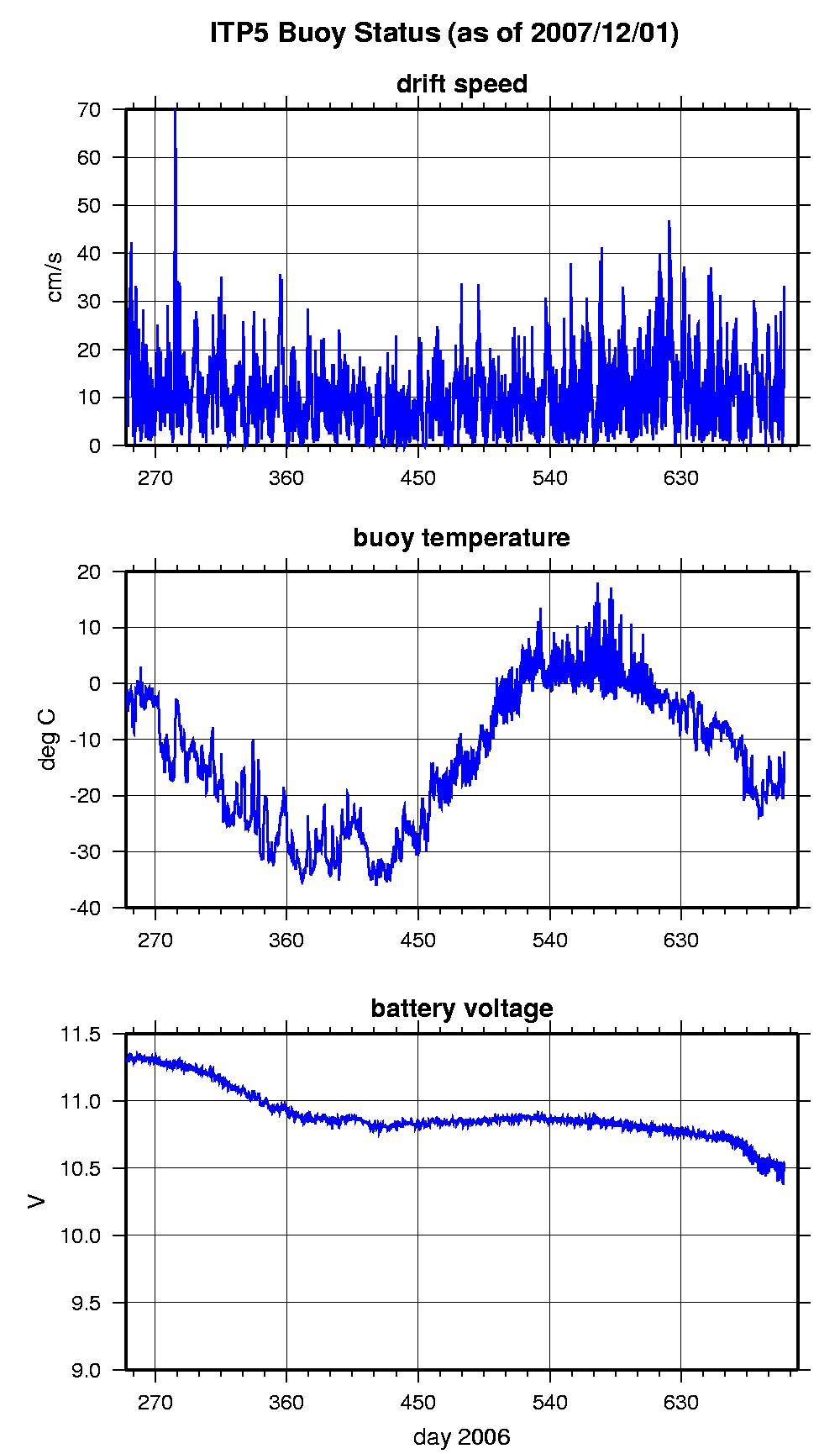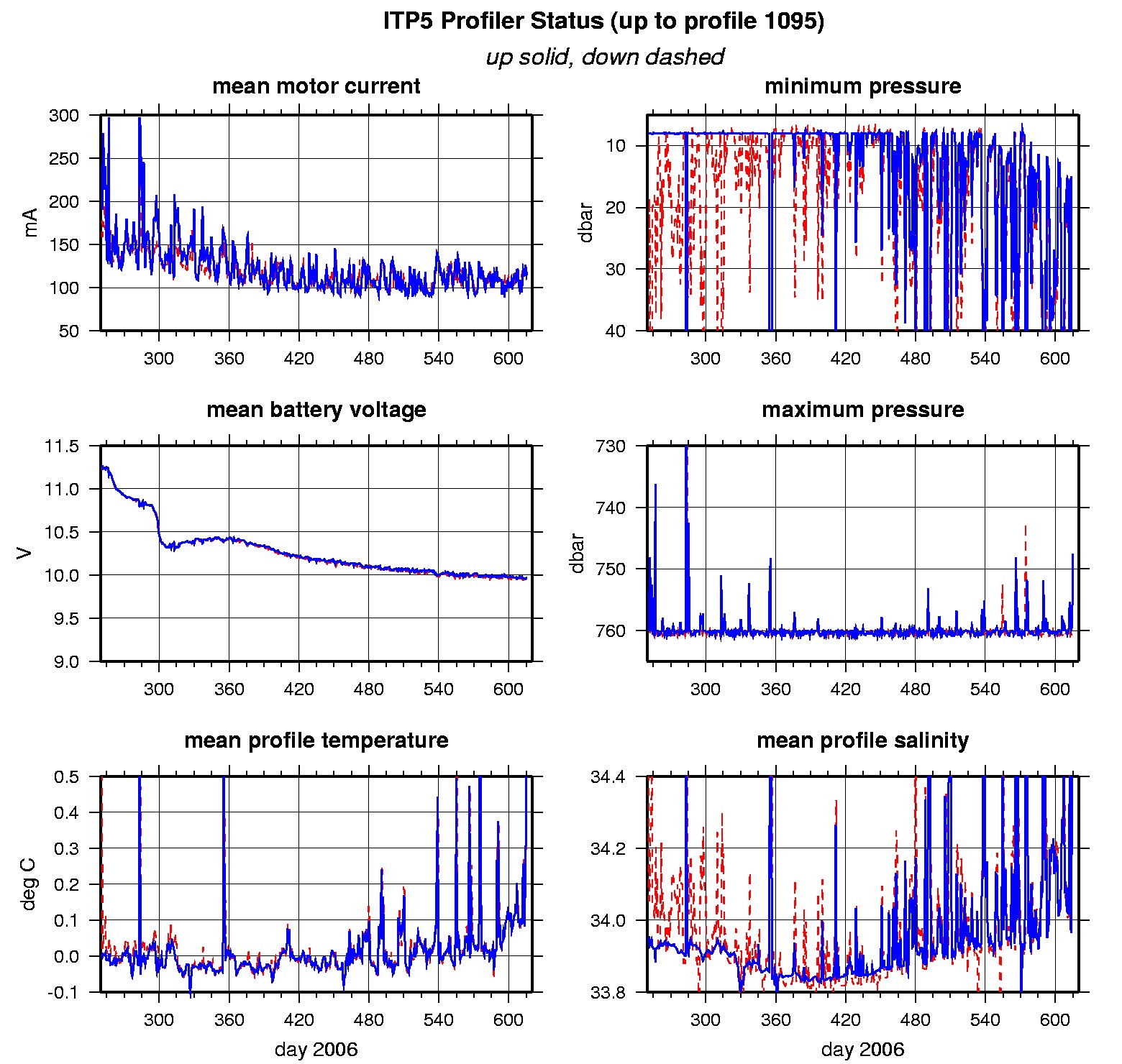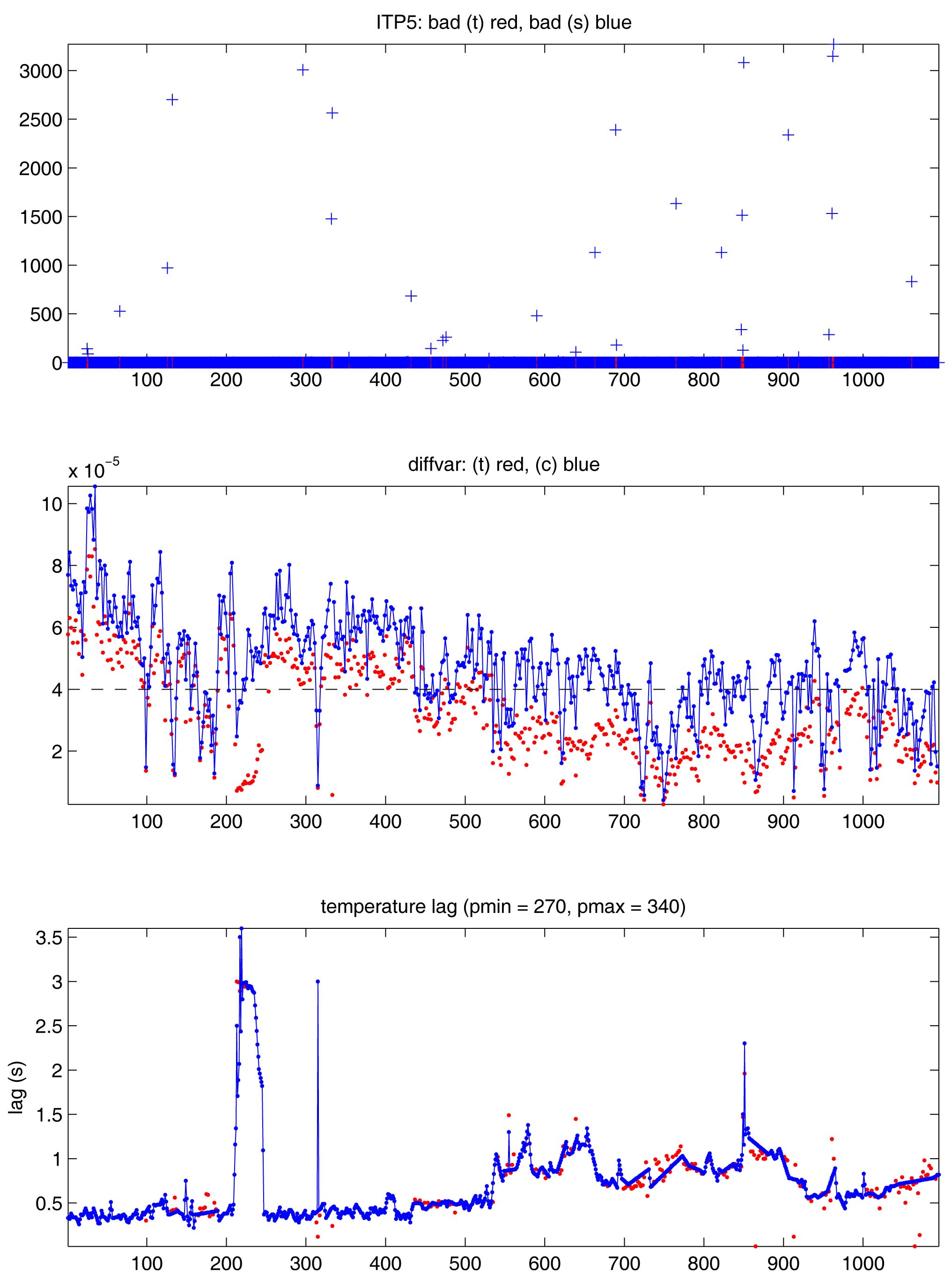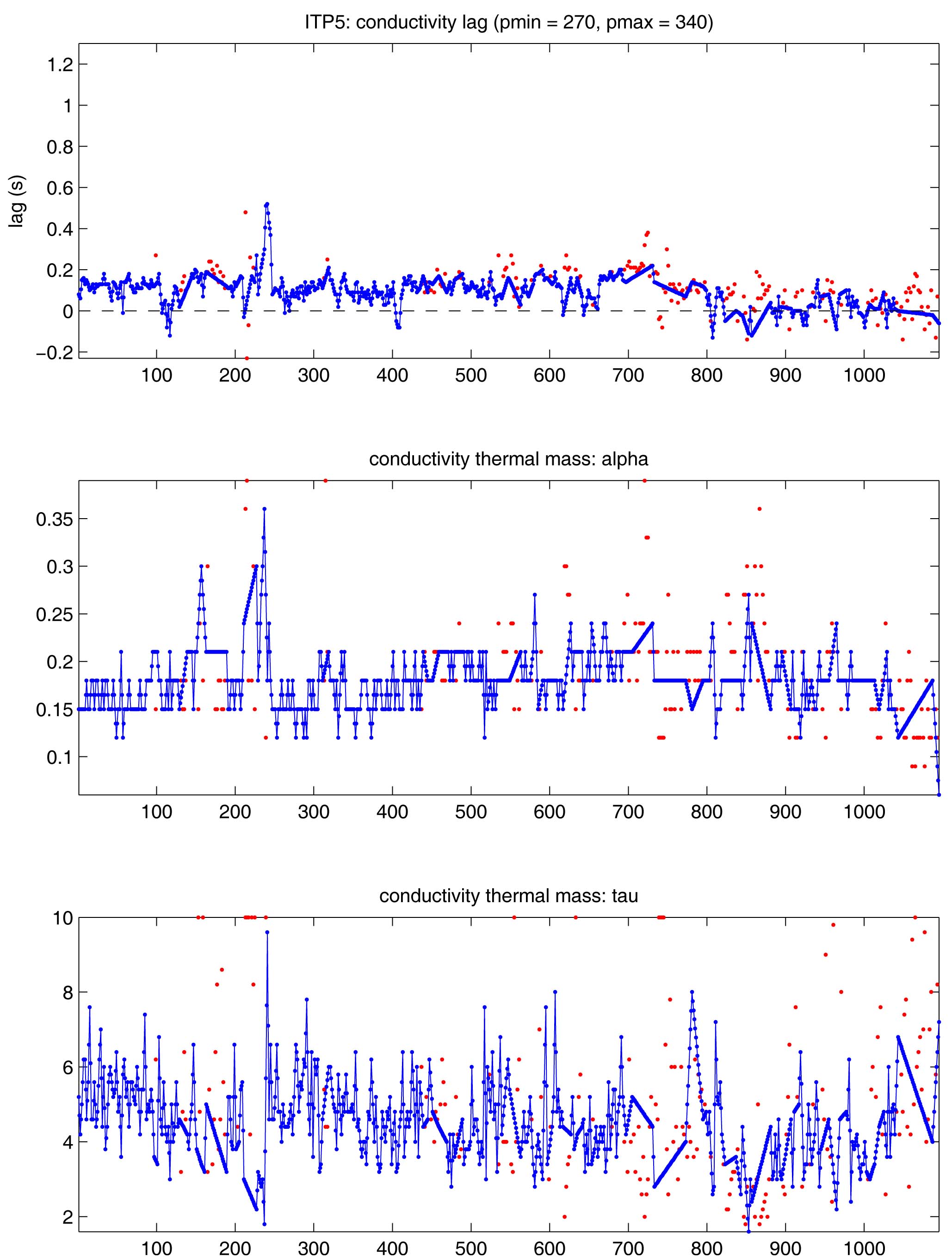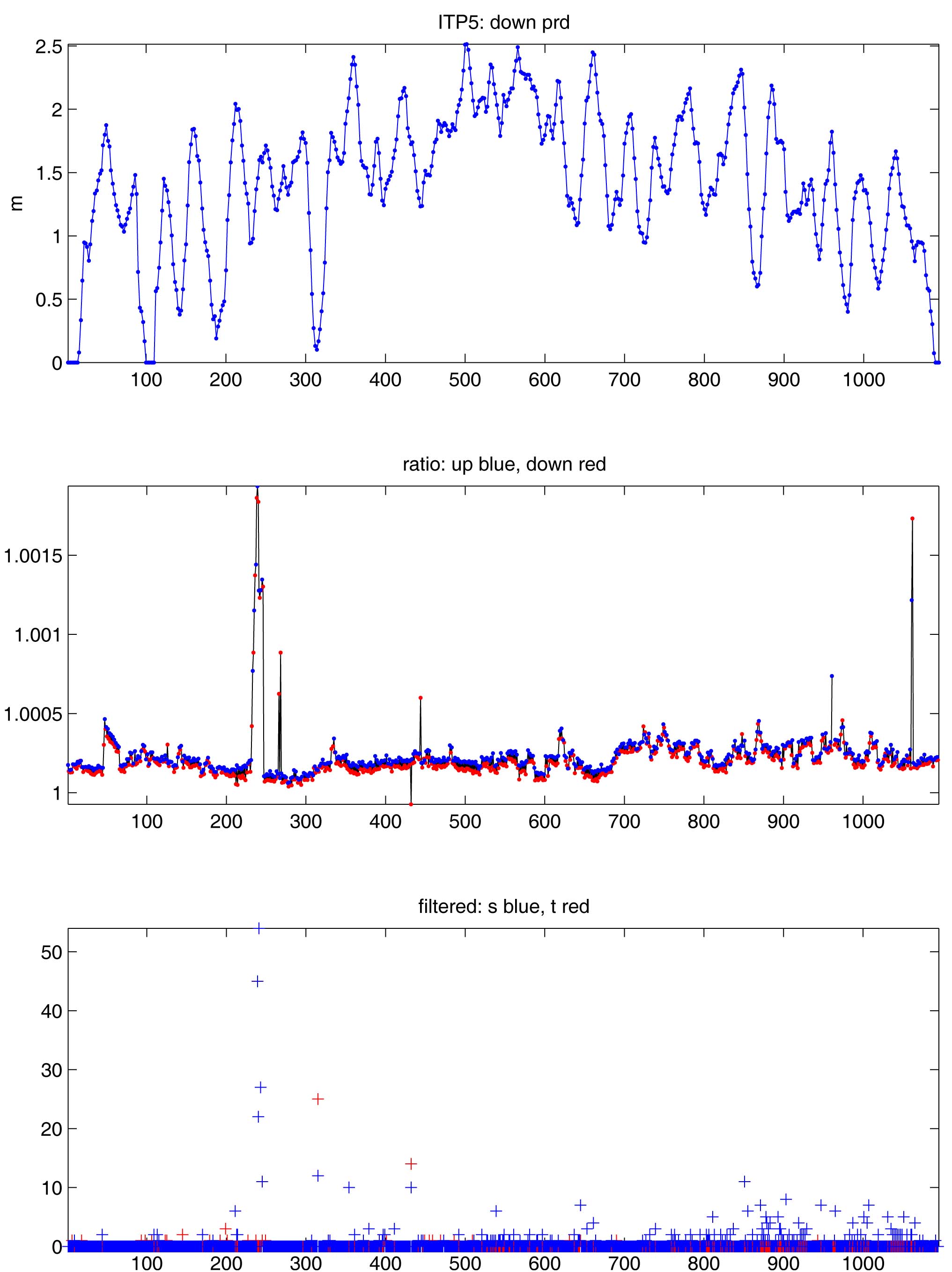ITP 5 Data Processing
The 1095 profiles that were recovered from the ITP were processed according to the procedures described in the ITP Data Processing Procedures. The processing parameters for ITP5 are shown in the figures to the right. The time series remained practically stationary for most of its lifetime, only heading north for the last 100 days of its lifetime. There are several possible eddy encounters particularly in the range between 50 and 150 m. There are no unexplained instrument resets, and only four profiles that didn’t go the distance: 296, 962, 963, and 1095. Towards the end, the profiler was having trouble making it all the way through profiles before timing out. Sensor lags in the later half of the time series do not have the benefit of clear thermohaline staircases, so the lags are less certain. In the final product, no profiles contained more than one bad temperature measurement, and 1051 (96.9%) have no more than one bad conductivity spike.
See the Data Products tab to the left for descriptions of the three levels (I, II, III) of data processing and to access all data.
